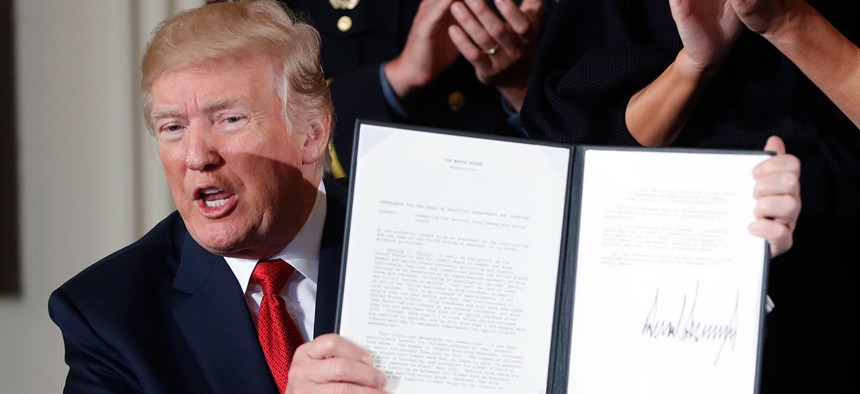The Most Urgent Call For Trump To Solve the U.S. Opioid Crisis Comes From the White House
Too bad the White House isn't doing anything about it.
Donald Trump has resisted calls to throw resources into the fight against opioid addiction, but now the call is coming from inside the White House: New research from the Council of Economic Advisers (CEA) says the cost of the crisis in 2015 was more than $500 billion, almost 3% of US annual economic production.
The report (pdf) attempts to measure the economic cost of growing dependence on opioids in the US, which affects at least 2.4 million Americans. In 2015, the year the new report focuses on, more than 30,000 Americans died of an opioid overdose. The spread of opioid addiction is seen as tied to economic malaise in the US (though perhaps not caused by it) and even to Trump’s election.
Today, opioid deaths are reaching record highs, while hard-hit states struggle to pay for autopsies and transport corpses.

(White House CEA)
The new report argues that attempts to gauge the cost of the crisis usually underestimate losses associated with overdose fatalities, and that is why their estimate is much larger than others. Recent estimates using the costs associated with responding to the epidemic find a 2015 cost of over $70 billion. But the economic costs of those lives lost range from $220 billion to $550 billion; the CEA settled on just over $500 billion as their final total estimate.
Despite the inherent ugliness of putting a price on a human life, it’s a worthy exercise to drives home the enormous cost of opioid addiction on society; it’s likely that the current cost exceeds these 2015 estimates.
Yet the report is somewhat baffling, since public health experts are still waiting for the Trump administration to take action. While the president declared opioid addiction a public health emergency in October, little will happen until he makes a deal with Congress to fund action.
“Sadly, he didn’t ‘show me the money,’ failing to offer the massive, new resources necessary to help reverse the escalating opioid epidemic and sustain millions of Americans in recovery,” Chuck Ingoglia of the National Council of Behavioral Health wrote after Trump’s announcement.
A fact sheet distributed by the White House today notes that $1 billion has been spent to fight drug addiction since Trump came into office, though much of that would have been appropriated under the Obama administration. The FDA has also announced new rules for the manufacturers of these drugs, designed to help prevent over-prescription of painkillers that many experts see as the root cause of the health emergency.
Contrast that with the action taken by 41 states to sue or investigate the makers of these drugs, which could result in a multi-billion dollar settlement akin to those won against Big Tobacco in the nineties. Despite growing evidence that abusive marketing practices by opioid makers like Purdue played a role in the crisis, federal prosecutors only began looking into the case last month. Trump’s original nominee to lead the White House’s response to the crisis was mainly known for his coziness with the drug industry and gutting the Drug Enforcement Agency’s ability to shut down pill mills.
The White House has been criticized for focusing on drug use as a moral failing, to be solved by advertising campaigns costing hundreds of millions of dollars. At the same time, the administration supports major cuts to Medicaid, the public health insurance program that provides a significant share of the funding used to treat drug addiction. Trump’s administration has also not embraced Naloxone, a medication that can prevent overdose fatalities, the largest cost of the crisis identified by his own administration.
NEXT STORY: Play of the Day: The Uranium One Chart




